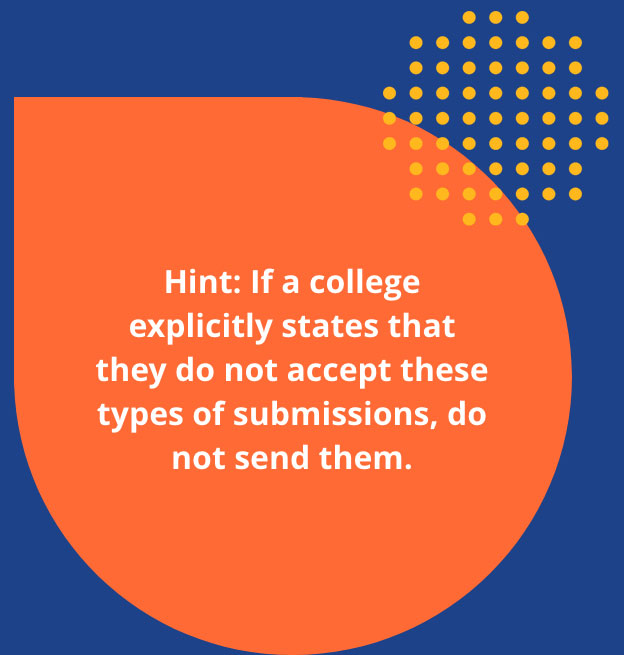How to Apply to College
It’s your senior year, and you know you want to apply to college. What are your next steps? This college application tool kit will help break down the application and admissions process so you can ensure your path to success.
Your senior year will be filled with many important events and deadlines.
Stay on track during your college application process.

Where are you on your college journey?
Step 1: I am just beginning!
Don’t stress – there is still time to research colleges.
Start here to learn about college.
Step 2: I need to narrow down my college list!
Click here to learn how to select colleges that are the best fit for your personal, financial, and academic needs.
Step 3: I am ready to apply!
Step 4: Apply for financial aid!
It’s never too early to begin applying for financial aid.
Learn more here.
Step 5: Decisions – what happens after I apply?
The next steps can be exciting and nerve-wracking as you await your admission decisions. Click here to learn what happens next.

I am ready to apply!
When should I apply? Deciding when to apply for college is crucial because the application deadline you choose determines when you’ll hear back about your admission status. Here’s a breakdown of the four general application deadlines:
Early Decision (ED)
For students certain about their first-choice college.
Early decision is the least commonly used application deadline but most common for highly selective colleges. Typically, students who apply early decision will hear first if they are accepted or not.
What is the catch? While this option allows students to apply to their first-choice college, it is a binding commitment to attend if accepted. If accepted, you must withdraw all other college applications and commit to enrolling in that college next fall. Before applying, it is important to discuss an early decision application with your caregiver and school counselor because each of you will have to sign the binding commitment.
Early decision (ED I) applications are typically due in November with students receiving an admission decision around mid-December. Some colleges offer a second round of early decision (ED II) with the application deadline aligning with the regular decision deadline for the college. Regardless of whether you apply through ED I or ED II, you will receive your admission decision before regular decision applicants.
Factors to consider before applying early decision: You have researched the colleges thoroughly and are absolutely sure that it is your first-choice college.
The college is a “best fit,” and you match or exceed the college’s typical admission profile (GPA, test scores, and/or class rank). If you are not sure you can learn more here.
Most likely, you will not be able to compare other colleges’ financial aid award packages before committing.
Early Action (EA)
For students who want an early response but aren’t ready to commit.
Early action I deadlines fall between early decision and regular decision, typically between October 15 and December 1. Students can expect to receive an admission decision between December and mid-February. EA II is later in the winter but before the regular decision deadline. EA is not binding, and students are not required to attend the college if admitted, nor are they required to withdraw other college applications. You should consider EA if you are a legacy, one of your parents attended the college, or your parent works for the college you are applying to.
Advantages of applying early action:
Recommended for competitive majors or if the school is a reach school.
EA admission decisions come earlier and allow students more time to compare financial aid packages.
If students are not accepted through EA, their application will be “deferred” or automatically put in with a regular decision for a second review. You can learn more about decision types here.
Regular Decision (RD)
For students who want to keep their options open and have more time to prepare.
Regular decision is the general application deadline, between January 1 and February 15, for students interested in enrolling in the fall. Students will typically be notified if they are accepted by April 1.
Rolling Admissions (RA)
For students who prefer a flexible timeline and want to apply as soon as possible.
Rolling admissions most common admission deadline. While it is not an actual “deadline” but a window of time, January 1 to February 15, when students may submit their applications, colleges will continually review and accept students instead of waiting until after the deadline, as they do with regular decisions. Colleges will continue to accept students until the program is filled or their targeted enrollment number is met. Students are encouraged to apply early to ensure their selected major does not fill up. Most colleges notify students by mid-March, but students may not hear until April 1.

How to decide?
If you have a clear first-choice college and are ready to commit:
Consider early decision.
If you want an early answer without the commitment:
Go for early action.
If you need more time to prepare your application or decide:
Regular decision might be best.
If you want flexibility and the option to apply as soon as you’re ready:
Look into rolling admissions.
How to apply to college
-
Get prepared
In the summer prior to senior year, you should create a plan for the colleges you want to apply to. Our College Application Planner will help you keep track of important deadlines and gather necessary information and documents.
-
Collect general information
Use this “Student Information Worksheet” to gather important details needed for your college applications

Profile
Your personal background information including name, contact details, demographics, etc.
Hint: Create a new personal email address (i.e., [email protected]) that you only use for college.
Family
Information about your parents/guardians, including all colleges they have attended, if applicable.
Hint: Include all of the colleges they attended because some colleges give admission preference to legacies (children of alumni) and tuition benefits
Standardized Test Scores
Record your SAT/ACT scores. Once you add colleges to your application, you can select if you want to send them the scores you listed in this section.
Hint: To submit or not submit? Learn more about if you should submit your SAT/ACT scores here.
Activities
List your extracurricular activities here. Typically, applications allow students to include up to 10 activities. Prioritize your activities in this way:
Long-term commitments: Include any long-year commitments (over two years) such as a sport, club, job, community program, etc.
Leadership: Highlight any activities where you held an official leadership position or can clearly show leadership activities.
Meaningful activities: Include any activities that impacted you or were particularly meaningful to you, even if they were short-term.
Work experiences: Include any part-time jobs, internships, or volunteer opportunities.
Family responsibilities: Include any activities to support your family, such as caring for siblings or other family members, working to provide income for your family, working in a family-owned business, etc. This is especially important for students whose family commitments prevent them from joining other extracurricular activities.
Hint: Do not assume that admissions counselors know every organization. Avoid using acronyms, spell out the entire name, and provide brief context, if needed.
Education
Information about your current high school and any other high schools you have attended. Include colleges you have taken dual enrollment courses with, the courses – including Advanced Placement and IB – that you have taken in high school, grades earned, academic honors and awards, etc.
Hint: Many colleges give students credit for early college courses (dual enrollment, AP, IB) that they took in high school. This can help reduce the number of courses you have to take, shorten the time to complete your degree, and reduce costs. Learn more here.
Major
For each college, you will select your first and second choice of majors. It is important to select a second-choice major so that if you are not accepted into your first-choice major, you may be considered for admission into your second-choice major. If you’re unsure about a specific field, you can select “Undecided” as your second-choice major. This option allows you to explore different academic areas while starting college.
-
Gather necessary documents
Transcript
Ask your school counselor for a copy of your unofficial transcript. This document will provide crucial details such as:
Courses taken: A complete list of the classes you’ve completed during high school.
Grades earned: Your performance in each course will be reflected in your final grades.
GPA (grade point average): Your cumulative GPA, which is a key factor in college admissions.
Class rank (if applicable): Your standing relative to other students in your graduating class.
Having this information on hand will help you accurately complete the education section of your application and ensure that you’re fully aware of your academic standing.
Recommendation Letters
Typically written by school counselors, teachers, or academic advisors, these letters provide insight into your academic abilities, personal qualities and community engagement. Here’s how to go about obtaining them:
How many do you need: Select 2-3 school staff members.
Pick the right recommenders: Choose people who know you well and can speak to your strengths. Ideally, these should be people who can comment on your academic performance, personal qualities, and involvement in the community.
Complete a brag sheet/resume: Many high schools provide a brag sheet—a document where you can list your academic achievements, extracurricular activities, and personal accomplishments. This helps recommenders write more detailed and personalized letters.
Request letters early: Ask your chosen recommender(s) at least one month before your application deadline. Provide them with your completed Brag Sheet to make the process easier.
Add recommenders to your online application: After they have agreed to write you a letter, add their contact information to your application portal. Ensure you have their correct email addresses and confirm they received the invitation.
Send gentle reminders: A week before your application deadline, send a polite reminder to your recommenders to ensure they submit the letters on time.
Express your gratitude: After they submit their letters, write a thank-you note to show your appreciation for their support.
Essays and personal statements
In this section of the college application, you will be given the opportunity to tell your story and highlight what makes you unique.
Personal essay: Most applications require students to write a personal essay. Use this to tell a meaningful story about your life, interests, identity, values, past experiences, and future hopes and dreams.
Optional essay: Take advantage of this opportunity to explain any circumstances that might have affected your academic performance or personal life, such as illness, family issues, or other significant events.
Personal statement: This short essay allows you to express your interest in a college and explain why it’s a good fit for you. It’s not always required, but can be a valuable addition.
Supplemental essays: Common for highly selective colleges, these essays vary by college and often address specific prompts related to the university or program. They offer a chance to provide additional insights into your character and fit for the college.
Essay-writing resources 
How to Approach the Essay >
Common App’s guidance on writing effective essays.
How to Write a College Application Essay >
Big Future’s tips and strategies for crafting your essay.
College Essay Guy >
Extensive resources for writing the personal essay, supplemental essays, and personal statement.
Free Guide to Writing Your College Essay >
A helpful workbook to get you started.
Crafting an Unforgettable College Essay >
Princeton Review’s tips for making your essay stand out.
Top Ten Tips for Writing a College Essay >
The National Association of College Admissions Counselors’ (NACAC) top tips for a strong college essay.
-
How to apply?
Most colleges use a universal online application that allows students to include their personal and academic information as well as their recommendations and essays. The three most common online applications are the Common Application, the Common Black Application, and the Coalition Application:
-
Submit applications
When you are ready to submit your application, keep these things in mind:
Review your application
Carefully check your application for any errors or inconsistencies. Make sure your grammar and spelling are correct, and if possible, have 1-2 people review it as well. Fresh eyes can catch mistakes you might have missed.
Hint: Before submitting your application, click on “Print Preview” to generate a printable version. Review your application thoroughly and share it with trusted reviewers.
Payment
Each college application usually requires a fee, averaging around $30 but up to $100 in some cases. If you’re applying to multiple schools, these fees can add up. Here are some ways to manage or reduce these costs:
Fee waivers for Delawareans: Delaware students can apply for free to over 18 local colleges from October to December through Launch into Your Future Month.
Online application fee waivers: Online application portals often offer fee waivers for students who demonstrate financial need. Your counselor will need to verify your eligibility for these waivers.
NACAC’s fee waiver: The National Association for College Admission Counseling (NACAC) provides waivers for students with limited financial resources.
College-specific fee waivers: Many colleges offer their own fee waivers. Check each college’s website or contact their admissions office to find out if they offer waivers and what the eligibility criteria are.
Register for the college’s online applicant portal:
Within about 10 business days after you have submitted your application, most colleges will send you an official “Thanks for applying to [XYZ college]” email with instructions on how to access and register for their online applicant portal, such as the University of Delaware’s “My Blue Hen Portal.” This is where the college will confirm your application submission, request any supplemental documents, communicate your admissions decision, and provide your financial aid award package.
Hint: Check your application portals weekly to make sure you do not miss any key deadlines or communications.

Congratulations, you submitted your application! Now what?
Even after you have submitted your application to various colleges, there may be additional tasks you need to complete before your application is considered ready for review. Typically, colleges will list these in your Online Applicant Portal. While these may vary by college, here are common examples of what you might need to do:
Complete the Self-Reported Transcript and Academic Record Systemf (STARS/SSAR)
Some colleges require students to submit their high school courses, grades, and test scores as part of their application. Make sure you have a copy of your unofficial transcript when filling out the form. Click here to learn more about the STARS and see to see if your college requires it.
Hint: If your college requires the STARS, you must complete it before the decision deadline.
Standardized test scores (SAT/AP/ACT)
If you have chosen to submit test scores, it is your responsibility to determine how each college wants to receive them:
Official test scores: Some colleges require official scores sent via your College Board or ACT account, which may involve a fee unless you have a fee waiver.
Self-reported scores: Other colleges accept self-reported test scores, which can be included on your application or uploaded into your application portal at no additional cost.
Check requirements: Verify the requirements on each college’s admissions website.
Supplemental essays
Some colleges require additional essays beyond the ones on the main application. These are common for students applying to honors colleges or if you are applying test-optional.
Mid-year report
Some colleges will request that your school counselor submit your academic progress for the first half of your senior year. This typically occurs in January and February.
Video introduction
Some highly-selective colleges require students to upload an introduction video.
Athletic requirements
If you plan to play a sport in college, ensure you meet all athletic requirements. Learn more here.
Interviews
Some colleges require, recommend or give the option for students to complete an interview to help the admissions office get to know you, your personality, your interests and your values.
Creative portfolios, prescreens, and auditions
For music and visual and performing arts programs, it is common that you will have to submit a creative portfolio or participate in a prescreen or audition process. It is important to identify these requirements early in your research process since they are often time-consuming and demanding. Meet with counselors, admission team members, and faculty from accredited art and design schools around the world for free portfolio reviews.


Additional Tips and Resources 
Email alerts
Check your email regularly for communication from the colleges.
Application portals
Frequently log in to each college’s application portal to monitor the status of your application.
Contact admissions
If you’re unsure about any requirements, contact the admissions office for clarification.
What are your next steps? 
Apply for financial aid!
It’s never too early to begin applying for financial aid. Learn more here.
Decisions – what happens after I apply?
The next steps can be exciting and nerve-wracking as you await your admission decisions.
Click here to learn what happens next.

